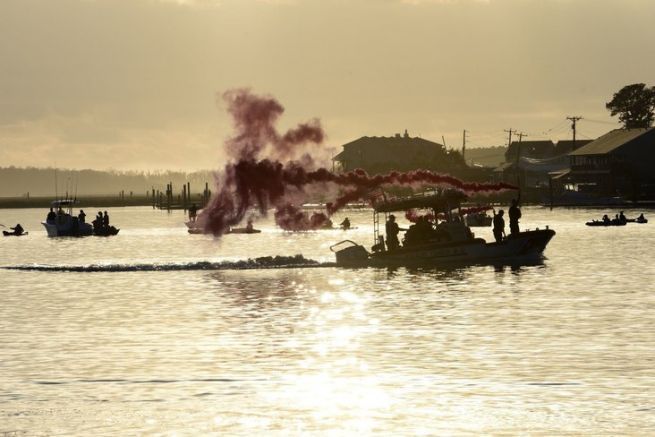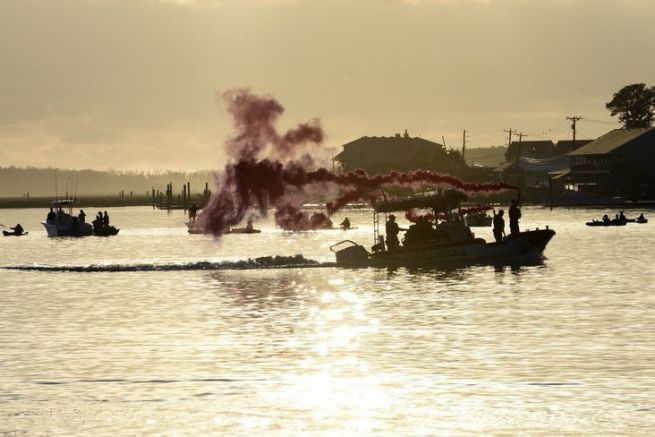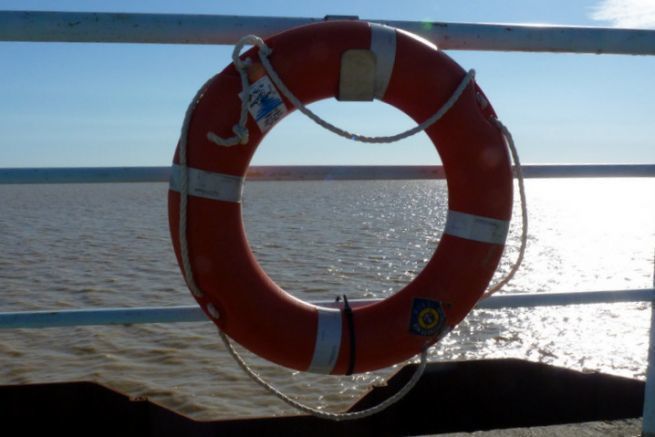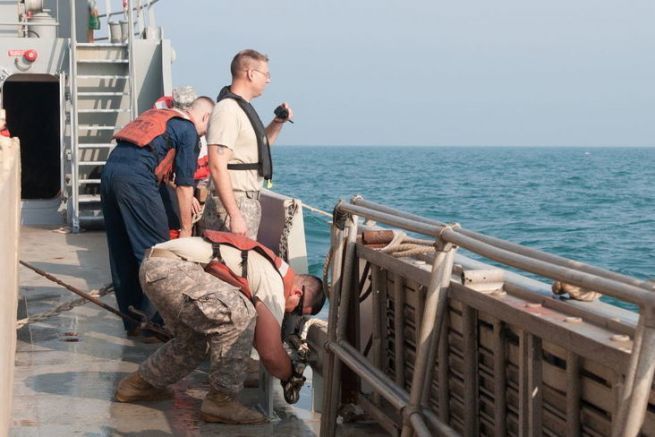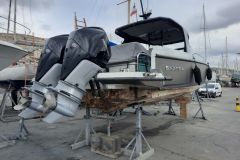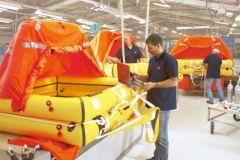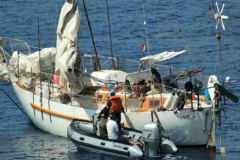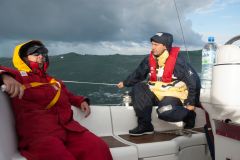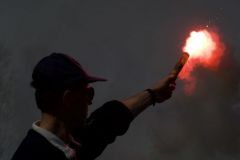Sending a request for help through your iridium or by activating your EPIRB beacon is a guarantee that, wherever you are on the surface of the globe, you will be able to reach an organization that will be able to send help to the area. If rescue from a distance is almost made easy by the onboard electronics, localization of proximity remains problematic.
Radio-location solutions are part of the answer
The homing solutions are based on radio beacons whose transmitting power is evaluated by the rescuers and partly meet this need, with the need to have operational batteries, to make sure that the antenna is deployed or, again, that the standard frequency has not changed on devices that we never use and that are not subject to any control.
Second to last link in the sea rescue chain
Whether we like it or not, traditional signaling methods remain effective and reliable for the very last links in the rescue chain. They are regulatory, efficient, inexpensive and usable by everyone.
Attracting attention
In all cases and in all methods, these signaling solutions use a simple principle, to arouse attention. To achieve this, they exploit the ability of the eye and the brain to distinguish abnormality. The abnormality is, basically, the flash of light, the cloud of smoke or, again, the American flag mounted upside down on the masthead. It is by thinking "what makes me different from my environment" at the moment we are in that environment that we can define what will be abnormal.
Pyrotechnic methods
Pyrotechnic methods are reliable, economical and proven. They require no training and are easy to implement. On the other hand, they are at least risky - sometimes lethal - to use and require regular renewal. Their principle is elementary: use fire to produce a signal (light and/or smoke) located on the ground, in the operator's hand or at altitude.
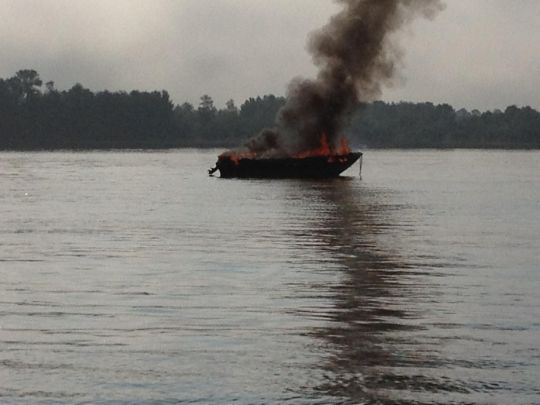
- Hand-held lights
Their principle is extremely common. You hold at arm's length a pyrotechnic element which, once set off, will emit a strong light visible at night by the light and during the day by the amplification of the luminous halo produced by the smoke, hand-held fires require certain precautions to be used safely. Wearing both heat-resistant gloves and eye protection is ideal, while you should position yourself with your back to the wind, away from any visual obstacle (sail, boat superstructure...) and set off the system, then hold the firework at arm's length and at an angle of 45 to 60 degrees.

- Floating smoke
The principle of floating lights is similar to that of hand-held lights, with the difference that the device is dropped into the water, drifting from the boat. Usable during the day only, these fires produce a thick smoke. The main precaution is to drop them so that the current moves them away from the boat. Their smoke is toxic to humans and, if they come back into contact with the boat, they can cause a fire.
- Autonomous rockets
They rise very high in altitude and shine for a short time. To be effective, they must be used in pairs, the second one being triggered immediately after the first one has completed its illumination. Some models are equipped with a parachute to maintain the glow a little longer in the air. Their implementation is a little more delicate, it is a question of lighting a wick (prefer a lighter, the matches being more prone to moisture) or of drawing a pyrotechnic cord and to aim towards the sky with the point of the equipment. The major defect of the principle is that if they are badly used and aimed in the wrong direction (towards oneself for example) dangerous for the operator and his entourage.
- Rocket guns
Probably the most popular representation of the flare. Instead of a manual release, these flares are released with a gun that is identical in every way to a lethal weapon. They go up to a high altitude and produce an intense luminous flash which remains visible at altitude for a long time, by means of a parachute. The same precautions as those applied to a firearm on board are to be observed, the first one being to never aim at a person, especially since the triggering devices (the guns themselves) are much less equipped with safety devices (trigger lock, hammer lock...) than their warlike equivalents.
Non-pyrotechnic devices
This second category includes everything that does not produce light or heat. These devices are visible on last approach. They are effective from an overflying aircraft or another nearby boat.
- Portable flashing lights
Division 240 requires that our life jackets be equipped with a visual device. These flashing lights fall into this category. They are powered by a long-life battery and emit light. Depending on the model, these lights will be hand-held or left drifting in the current. Their powerful LEDs make them visible at long distance and for a duration approaching 60 hours sometimes. Finally, they produce the luminous SOS signal (... --- ...), supposed to attract the attention of any observer. Quite expensive, they need to be renewed regularly and can be accidentally triggered without anyone noticing it before needing to use them.
- Turnaround lights
Required to comply with the famous 240 division, we all have on board our boats these reversing lights. Their principle is common, stored upside down, they will light up when they are turned over, by falling into the water for example. Floating, they are now equipped with LED bulbs that, again, give them a long duration of illumination. Economical and reliable, they have the disadvantage of depending on batteries which have a limited life span. Finally, they are supposed to be equipped with devices that will prevent them from turning on automatically if they are not released from the boat, devices that, in the mess of a boat if they are not permanently in place, tend to fall off and let these lights turn on and empty, in the discretion of a trunk, their battery.
- The upside down flag

An archaic method, but known all over the world, it consists in placing a flag upside down. For it to work, use a flag that allows it (avoid the French flag) and recognizable. The best choice, because it is known worldwide, is to use the American Stars and Stripes. Do not see any harm to the honor of a country by doing so, it is a known and effective signage principle. This method does not require any battery or special storage conditions, but requires that you have first thought of buying this flag and have it on board, obviously.
- The orange fabric
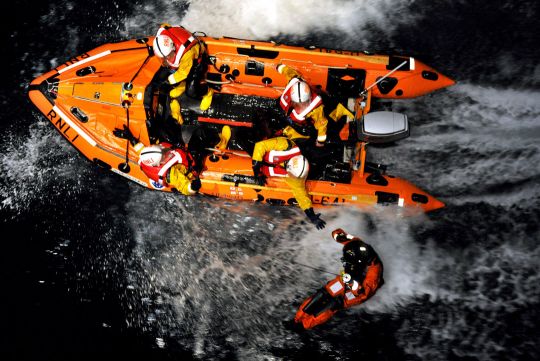
The color orange is almost non-existent in nature, no matter where you are. That's why it's used for our life jackets, for rescue boats or for the 2 x 2 meter piece of cloth that you can deploy. On the deck of the boat, holding it with buckets of water or as a flag sent to the mast, it signals to any observer that you need help. Like the national flag, the only precaution it requires is to have it on board!
- Everything you need at your fingertips
This may seem surprising, but it fits in with the logic of looking for abnormality. So, creating a cluster of material that can float and, of course, not sink you to the bottom can be used to indicate that something is wrong. For example, creating a line made of a sunbathing mattress attached to a lifejacket itself attached to a Quebec flag is a solution available on all boats, incongruous enough to draw attention to you.
